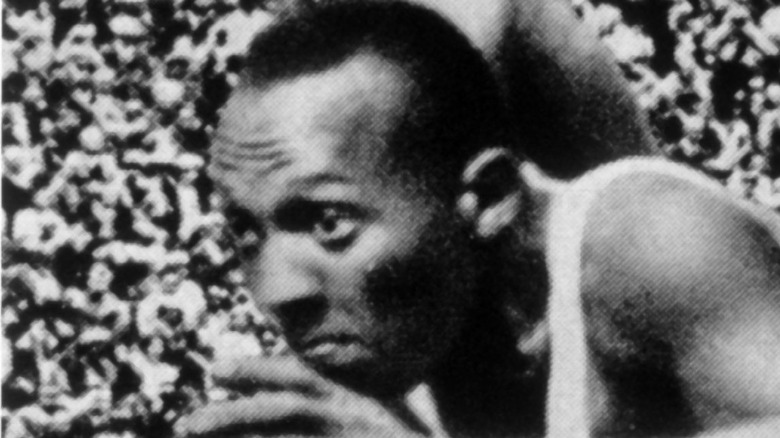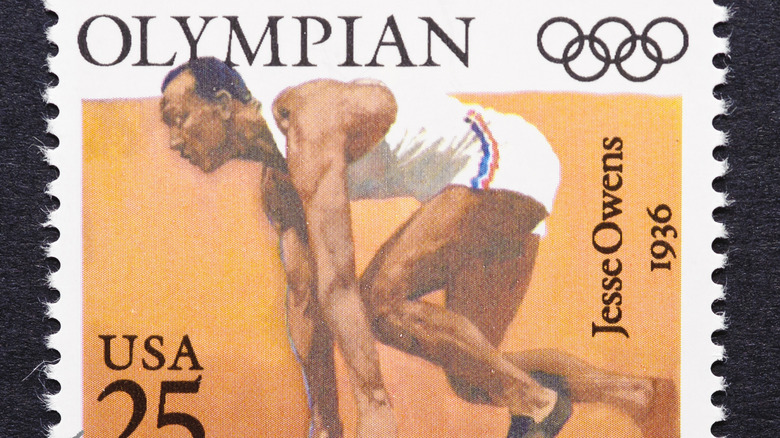This Was The Secret To Jesse Owens' Speed
At the infamous 1936 Olympics in Berlin, Jesse Owens won four gold medals for the US. Needless to say, though, he made a name for himself as a remarkable track athlete long before this, while still attending Cleveland's East Technical High School. According to a Jesse Owens biography, he matched the then-world record for a 100 yard sprint (9.4 seconds) as a senior.
He tied that record again and broke the broad jump record at Ohio State University (per History), on May 25 1935. On the very same day, he broke a further two records: the 220-yard low hurdles and the 220-yard dash. Damion Thomas, the National Museum of African American History's curator of sporting collections, would later dub this (per Smithsonian Magazine) "an all-time historic event... to set so many world records in one meet."
How did Owens become one of the greatest speedsters to ever compete? It was partly due to a very specific (and unusual) technique.
Trainers and unique (but winning) techniques
While Jesse Owens' natural talent was immense, it takes more. He trained diligently and was supported by coaches who would help to shore up those few areas where the athlete needed to improve. According to Smithsonian Magazine, Larry Snyder, who coached him at Ohio State University, noticed that he seemed to lose some time at the starts of races, and suggested that he work on distinctive crouches on the starting line to help. It's only natural that this would have been a weakness of Owens'; after all, there were no starting blocks at the time. Per National Geographic, he had to dig makeshift "blocks" for himself with a gardening trowel.
The most influential of his trainers, perhaps, was Charles Riley. Owens struggled to achieve his true potential at first, and it was Riley, a high school coach and teacher, who helped the runner to improve while in junior high.
According to jrank, Riley offered Owens morning training sessions, so as not to jeopardize the runner's after-school schedule,. Most importantly, perhaps, he took Owens to watch racehorses in action. Their upright, fleet-footed stance was entirely unlike the way human athletes ran, but Owens found that adopting the method really helped. It gave him an edge over the competition, who were utterly unfamiliar with the technique.
With his unusual methods, Owens stood apart from the competition, but perhaps it was exactly this that helped him to triumph over them at the Olympic Games.

